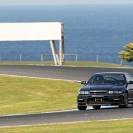External Harddrive With Headunit
Announcements
-
Similar Content
-
Latest Posts
-
The car is red. Leave it red, it looks great. Unless it's sealed though it's not going to be doing anything for performance and just suckin in hot air, mind you.
-
Pic of Nos, turbo kit and sequential not loading. 404 not found
-
im sure mine stays in gear and wont shift unless i shift it? and for sure it wont go back to Auto mode if its put in manual mode? if i use paddles but its still in D then of course it goes back to auto mode. but yer if its in -+ and i use paddles it will not auto change gears what so ever and i have tried this. it will gear down if at a stop though which is kinda nice but goes back to 1st gear not D. i think it used to be like this with imports aswell i dunno if its really like it anymore like when i got my R33 it had alot of JDM options which local cars didnt have. Now local cars have kinda caught up even the lower models. but yer transfer rates and other things makes it almost on par.
-
Very decent bit of kit. Definitely black it out I reckon.
-
Because people who want that are buying euros. The people with the money to buy the aftermarket heads and blocks aren’t interested in efficiency or making -7 power, they’re making well over 1,000hp and pretty much only drive them at full throttle best way to way make money is know your customer base and what they want and don’t spend money making things they don’t want.
-








Recommended Posts
Create an account or sign in to comment
You need to be a member in order to leave a comment
Create an account
Sign up for a new account in our community. It's easy!
Register a new accountSign in
Already have an account? Sign in here.
Sign In Now